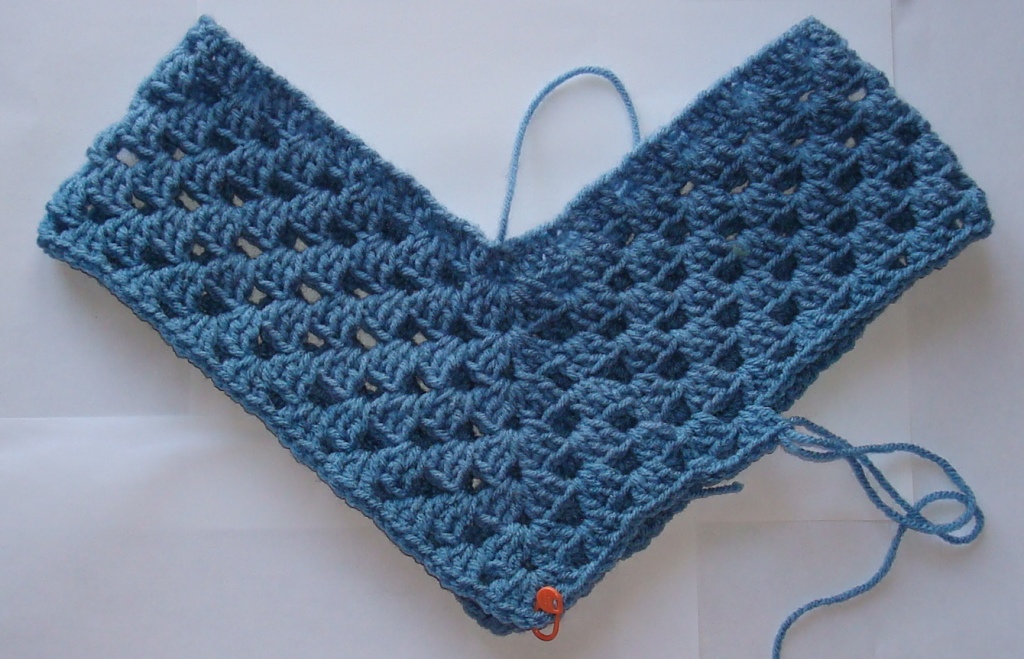
I’m working with my eight year-old crochet student on a granny-style poncho which we are both making, hers for herself and mine for her little sister. The poncho is crocheted in the round, and it’s like making a granny square, except there are only two corners instead of four.
What I love about the pattern (pattern link at the end of the post) is that the designer includes a symbol chart along with the written instructions. I’ve been trying to think of ways to start my young student reading simple patterns, but I think symbol charts might be the way to go for now. They seem to be a lot easier than written patterns for her to understand.
On the other hand, there are a couple of things I don’t like about the pattern; so I decided to make some changes to suit my personal preferences. It’s also a way to teach my student you CAN make adjustments to a pattern if there’s something you’d prefer to do differently.
Adjusting How Rounds End and Begin
One of the things I want to change in this pattern is the way the rounds end and begin. The designer uses the “half-corner” method I wrote about in a blog post that describes 3 ways to begin and end a granny square round.
Remember, this poncho is essentially a granny square with two corners instead of four. So these methods will work with this poncho.
Half-Corner Method
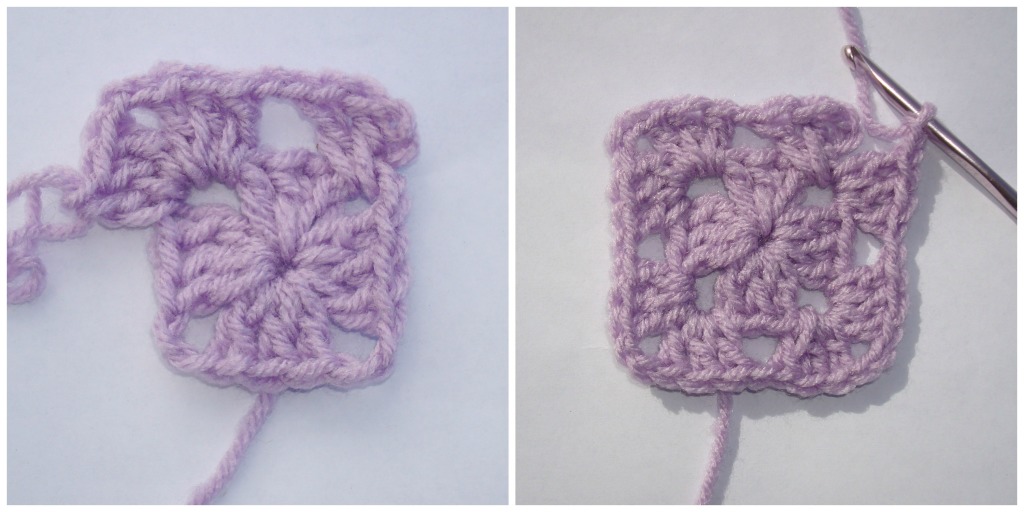
As the name suggests, the round begins with haft a corner (a full corner is “3 dc, ch 1, 3 dc).
To begin the half corner after you’ve ended the previous round with a slip stitch to join, you chain 3 and then do 2 double crochets to create the half corner in the chain space. At the end of the round, you finish that half corner with “3 dc, ch 1, sl st to the top of the dc of the first half of the corner.” So in the “half corner” method, all of the rounds begin and end at this corner.
The problem is that the two double crochets of the first half of the corner are actually worked BEHIND the beginning ch 3, even though they look like they come after the chain 3. That’s the only way you can get them in the chain-1 space that separates the two halves of the corner.
My student had some difficulty making those two double crochets, so we decided to use the third method described in my blog post. I call it “It Depends How the Round Ends” method because how you begin the round depends on how you completed the previous round. (I describe this method fully in the blog post referenced above).
But using this method brought something else to my attention that I decided to change, namely, getting rid of the dreaded “chain 3” double crochet.
Getting Rid of The Dreaded “Chain 3” Double Crochet
The “It Depends” Method
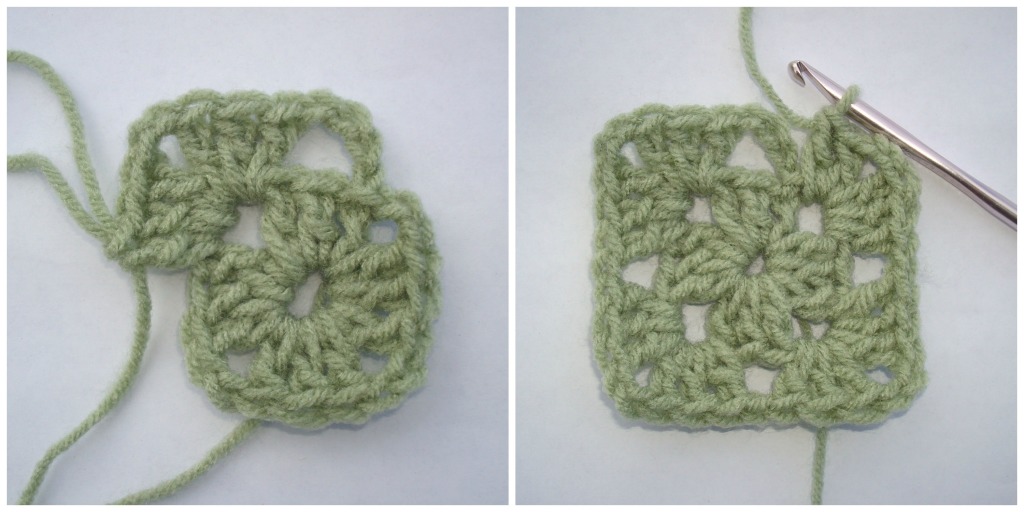
One of the two ways the rounds begin in the “It Depends” method is to start with a chain 4, which counts as 1 double crochet (chain 3) and a chain 1.
As most crocheters will tell you, the chain 3, which substitutes for the double crochet at the beginning of a round or row, is a lot thinner than an actual double crochet and leaves an ugly gap between it and the next double crochet. So we’re always searching for ways to make it look more like a REAL double crochet.
I came across one such ch-3 alternative at the Shibaguyz Designs blog that involves substituting a “single crochet, chain 2” for the chain 3 at the beginning of a row (or round).
It’s a lot better than a chain 3, but I thought, why not a “half-double crochet, chain 1” instead?
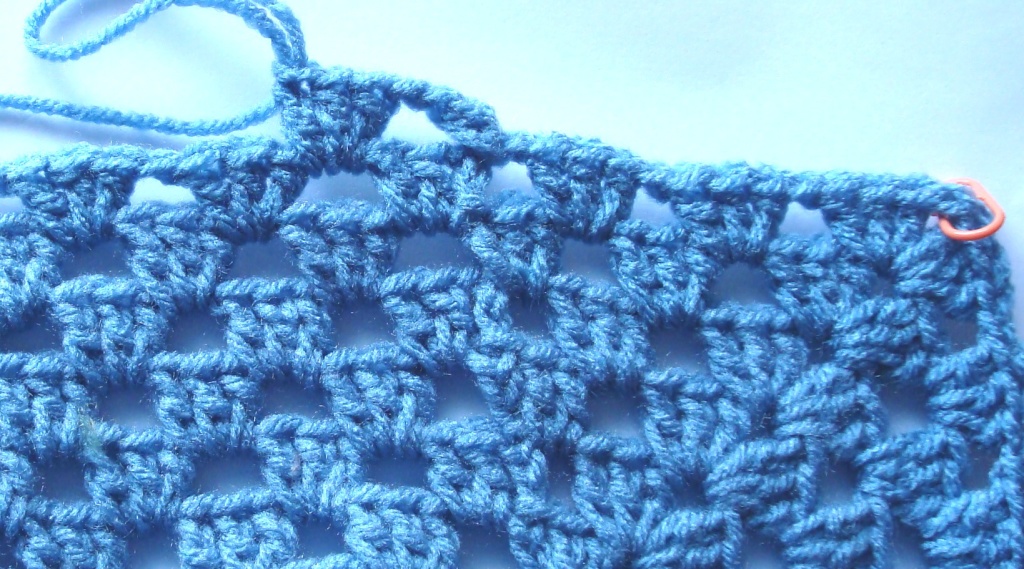
I like that this “fake double crochet” is almost the height of a real double crochet. The extra chain in the ch 2 represents the chain 1 between each group of 3 double crochets of the granny pattern repeat.
So we have adjusted the pattern to include a “1 hdc, ch 2” at the beginning of the round that requires a chain 4. When you’re at the end of the round, you’ll complete the corner with “3 dc, ch 1, 2 dc, sl st to 1st ch after the hdc.”
Note: When using the “It Depends” method, the beginning of the round will move one 3-dc group to the left (to the right if you’re left handed like my student) of the “3 dc, ch 1, 3 dc”corner as you work succeeding rounds. The orange stitch marker in the photo above is where the round originally began and ended on round 2 of the poncho pattern.
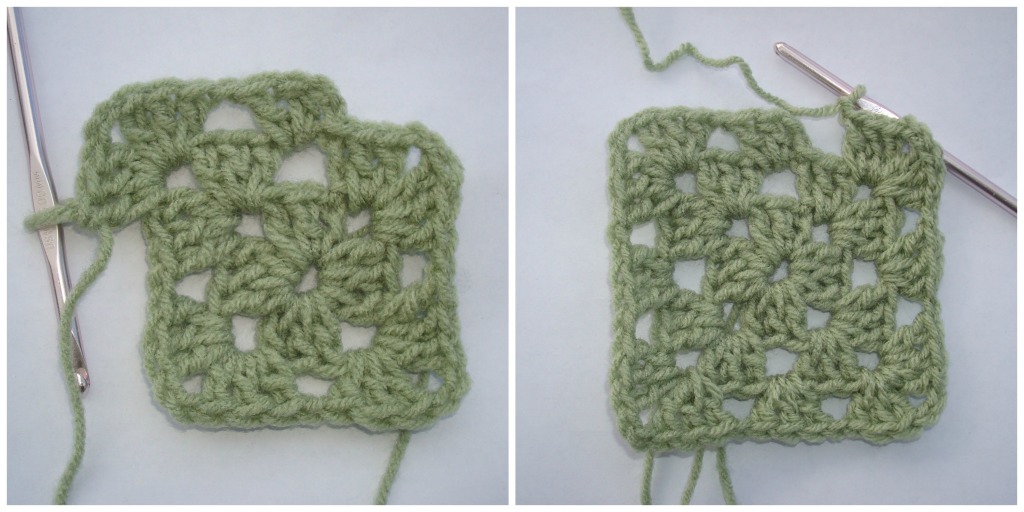
When the end of the previous round calls for you to start the new round with a “ch 3, 2 dc in the ch-1 space,” we’ll replace that chain 3 with a “1 hdc, ch 1.” At the end of the round, “ch 1, sl st to the top of the beginning ch 3.” Then begin the next round with a chain 4 and alternate between these two ways to end and begin succeeding rounds.
Two Changes Made to the Poncho Pattern
To sum up, I made two changes to this pattern. I –
- Changed the way the rounds end and begin.
- Substituted a “fake double crochet” for the ch-3 double crochet.
These adjustments won’t affect how the finished piece looks. In fact, I think they’re going to improve the end result.
Here’s a link to the poncho pattern in case you’re interested in trying it for yourself. (Note: The pattern uses European crochet terms).
What adjustments to crochet patterns have you made to suit your personal preferences?


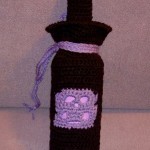

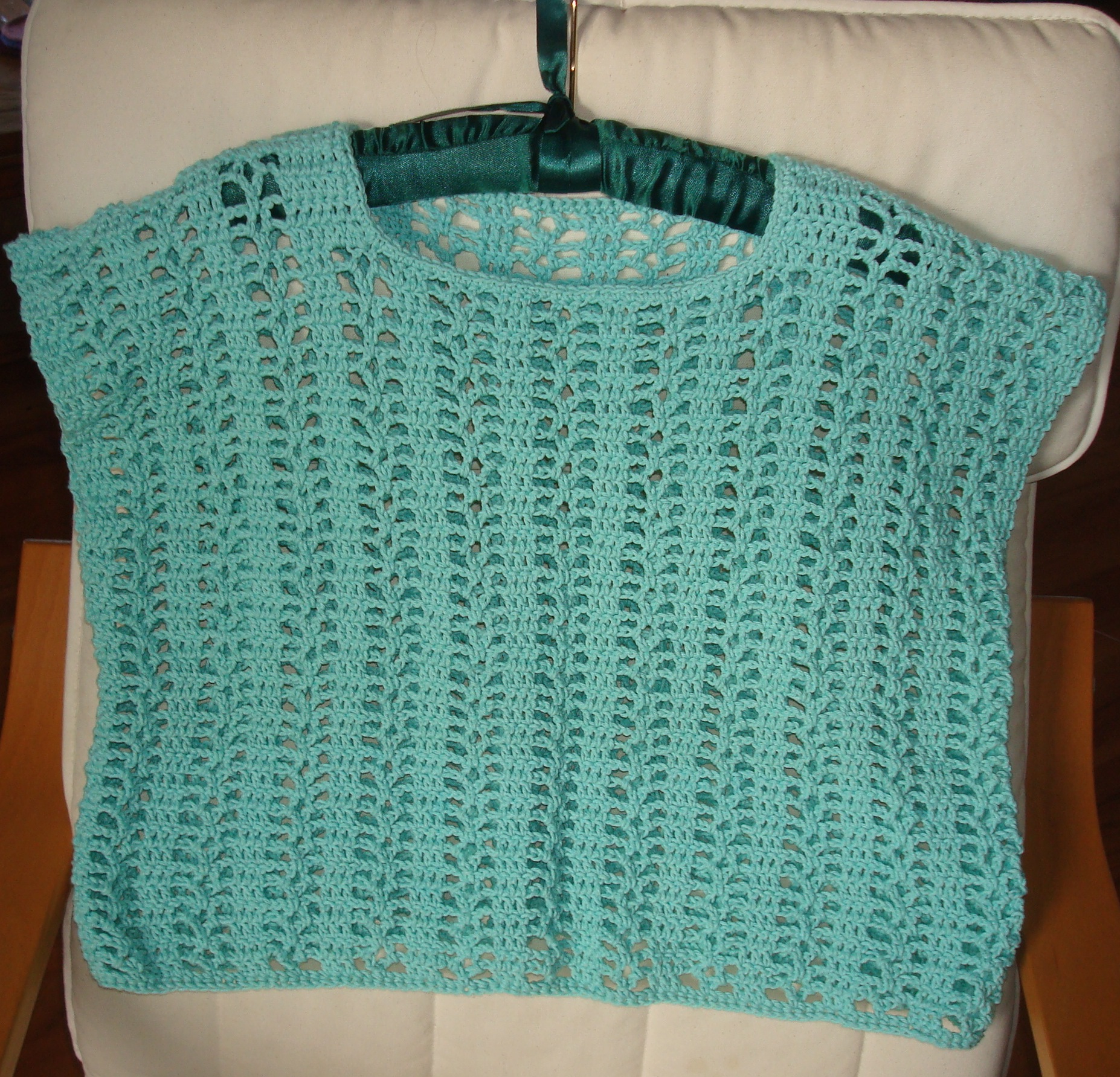
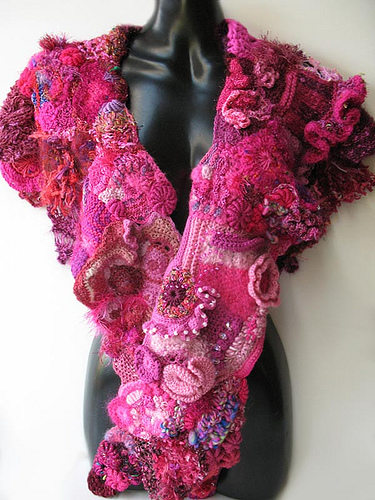
2 comments On Changing a Crochet Pattern to Suit Your Personal Preferences
Hi, I start my crochet at the corner, also. But I do it at the start. Make a loop; chain 6; join with a slip stitch to first loop to make a circle. Chain 3(first double crochet), 2 double crochet in the circle, chain 2, 3 double crochet in the circle, chain 2, 3 double crochet in the circle, chain 2, 3 double crochet in the circle, chain 2; you have the start of a granny square. Now, slip stitch the chain 2 closed to the top of the beginning chain 3(first double crochet). To start the next round-I slip stitch across the two double crochet by the chain 3, and slip stitch in the chain 2 space. Make a chain 3 on top of the slip stitch; then, 2 double crochet in the chain two space, chain 2, 3 double crochet in the chain 2 space, to finish the corner.
Hey Nancy, sorry for the delay in replying. There are so many ways to begin and end a granny square. Thanks so much for describing how you do it!!